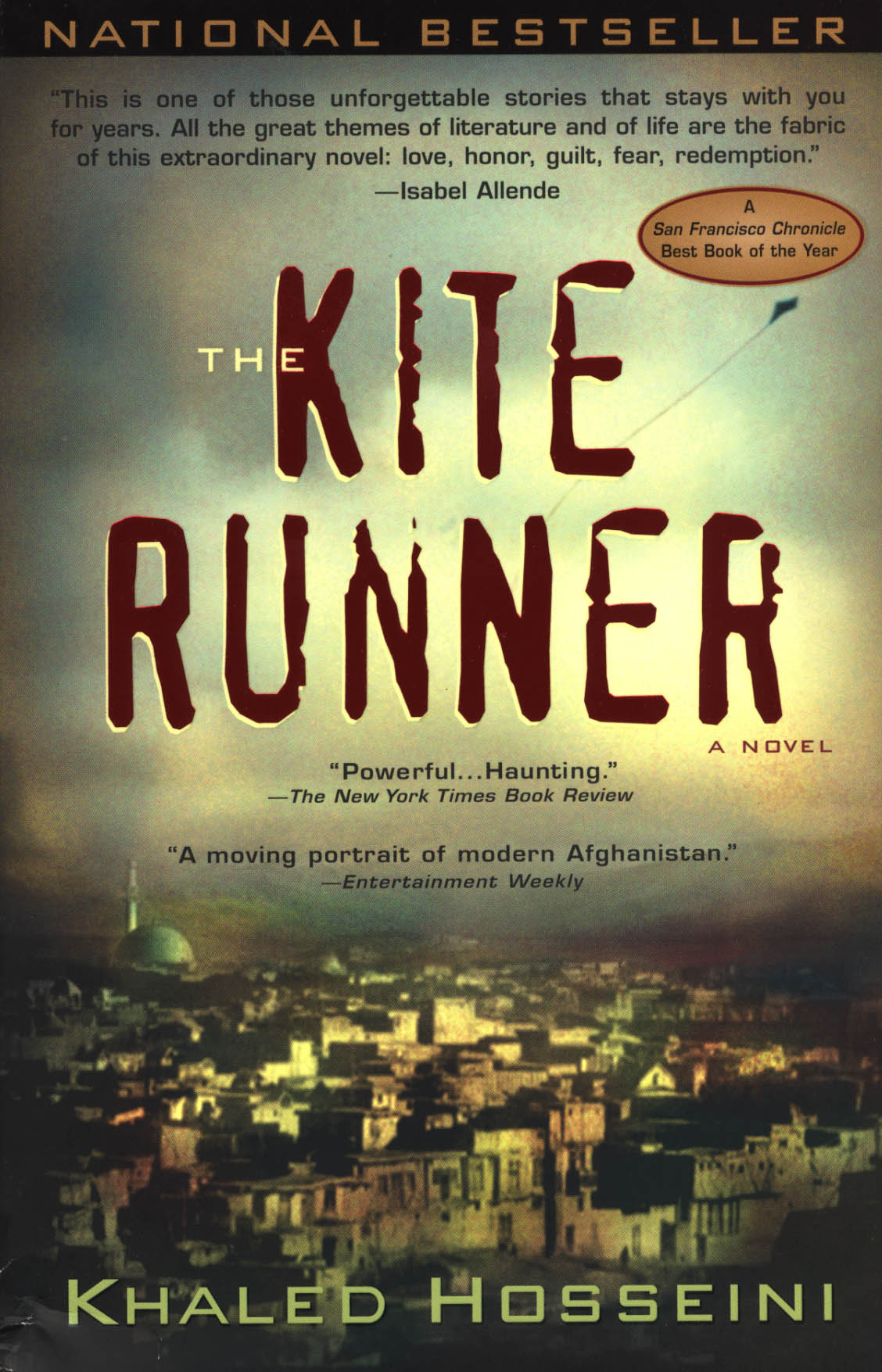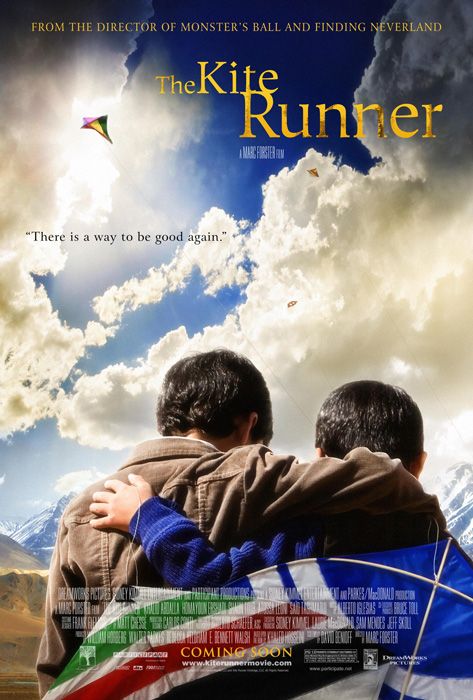Beneath the narrative of one man's personal story, The Kite Runner covers a variety of themes and topics, most notably those of religion, politics, sin, redemption, friendship, and the relationship between father and son. Amir's story somehow manages to encompass all of these while providing an engaging and moving story that is as educational as it is intriguing.
Webquest: The Kite Runner
Sunday, October 3, 2010
Summary
Beneath the narrative of one man's personal story, The Kite Runner covers a variety of themes and topics, most notably those of religion, politics, sin, redemption, friendship, and the relationship between father and son. Amir's story somehow manages to encompass all of these while providing an engaging and moving story that is as educational as it is intriguing.
The Movie
The bestselling novel was adapted for the screen in 2007. Directed by Marc Forster, the film won numerous awards and was nominated for an oscar, gaining recognition worldwide.
To watch the trailer, click here.
Symbols and Literary techniques
Among the literary techniques used to tell the story, one of the most predominant is Hosseini's use of symbols. The symbol of the kite is recurring, acting as a metaphor for a dying culture as well as a metaphor for Amir's guilt. Since kite fighting is such an integral part of Amir's childhood, the fact that it is banned when the Taliban take over symbolizes how drastically things have changed. On another level, the symbol of the kite serves to remind Amir of his sins. He wants so badly to impress his father with the trophy of the fallen kite that he fails his best friend, taking Hassan's sacrifice and using it for his own personal gain. Conversely, the kite, in the end, represents a sort of redemption, of flying above the sins of the past. When he flies the kite with Hassan's son and runs to retrieve the fallen one, he brings the symbol around full circle.
Assignment: What are some other symbols or literary techniques that heighten the meaning of The Kite Runner? Write a short essay (700-1000 words) examining one literary element such as the symbol of the sacrificial lamb, the use of flashback, or another technique that stands out. Use examples from the text and explain how you believe your topic helped or hindered the meaning of the novel.
30 points possible: 10-creativity, 10-textual evidence, 5-conclusion, 5-grammar and mechanics
Kite Battles
A recurring image in The Kite Runner is, of course, that of the kite. The battles are explained as long-standing traditions in the Afghan community, and are used as metaphors by the author. As such an important element of Amir's life and the culture in which he lives, one should take the time to look into the tradition.
Here is a brief description of kite fighting. This particular article also elaborates upon the proper terminology.
Though Kite Fighting was a large part of the Afghan culture in the time setting of The Kite Runner, it was banned when the Taliban came into power. This makes the symbol of kite fighting in the novel so much more powerful, as the outlawing of such an important activity brings the suppression of the Afghan culture into new light.
Assignment: Make your own kite and bring it to class. Don't worry, we aren't planning on holding a kite fight, so tar-slicked strings are unnecessary. Decorate it and have fun!
20 points possible: 10-creativity, 10-effort
About the Author
Khaled Hosseini, born in 1965 in Kabul, moved from Afghanistan to France in 1976, and then to the United States in 1980 after being granted asylum. His father was a diplomat, and his mother was a teacher, but that was before they moved to the United States. They were granted asylum in the US when the Soviet coup in Afghanistan grew to unbearable proportions. In was in San Jose, CA that he graduated high school and got a degree in biology. He then earned his medical degree and became a doctor. Hosseini did not write his first novel, The Kite Runner, until 2001, and it quickly became an international best-seller.
Saturday, October 2, 2010
Religion
The Kite Runner deals heavily with the religion of Islam and it's various sects. Tensions arise, enemies are made, and people are judged based on their interpretation of the Qu'ran. On one hand: the Shi'ah. On the other: the Sunni. While the names themselves may be familiar from the nightly news, the meaning behind them is complex. While, without reading the Qu'ran, it is difficult to grasp the finer points of Islam, one can still become familiar with the terms.
Found here is a brief summary of the basic beliefs of Islam. Within Islam, however, there still remains the reality of the warring sects. What is the separating factor when these groups believe in the same holy book?
The Sunni branch of Islam is the largest denomination of Islam in the world. They are the orthodox branch, and have very specific interpertations of the Madh'hab (schools of thought).
The Shi'a branch of Islam is much smaller in number yet remains the second-largest sect. Their primary beliefs differ from Sunni in that they believe that Imams (The Prophet Muhammad's descendants) should, by divine right, hold greater power in the Islamic religion. They believe the first of these Imams to be Ali, Muhammad's cousin.
There are other sects within the religion of Islam, but the two largest branches are most important in understanding the text. If you are interested to learn more, this site has a wealth of resources, answered questions, and articles to study.
Found here is a brief summary of the basic beliefs of Islam. Within Islam, however, there still remains the reality of the warring sects. What is the separating factor when these groups believe in the same holy book?
The Sunni branch of Islam is the largest denomination of Islam in the world. They are the orthodox branch, and have very specific interpertations of the Madh'hab (schools of thought).
The Shi'a branch of Islam is much smaller in number yet remains the second-largest sect. Their primary beliefs differ from Sunni in that they believe that Imams (The Prophet Muhammad's descendants) should, by divine right, hold greater power in the Islamic religion. They believe the first of these Imams to be Ali, Muhammad's cousin.
There are other sects within the religion of Islam, but the two largest branches are most important in understanding the text. If you are interested to learn more, this site has a wealth of resources, answered questions, and articles to study.
Political History
The novel, while a personal narrative, alludes to a large amount of political happenings in Afghanistan with which not everyone is familiar. The changing political climate plays a large part in Amir's struggles, and affects the book's message as a whole. Consequently, it is vital that one understands the basic political overlay when examining this text.
This article provides a brief history and historical analysis for the events mentioned in The Kite Runner.
Here is a list of terms within both the novel and the article that may cause some confusion. (Source: dictionary.com)
Shi·ʿite –noun Islam .
a member of one of the two great religious divisions of Islam that regards Ali, the son-in-law of Muhammad, as the legitimate successor of Muhammad, and disregards the three caliphs whosucceeded him.
Also, Shiite, Shiʿa, Shiʿah
Sun·ni –noun Islam .
1.
Also called Sunnite. a member of one of the two great religious divisions of Islam, regarding the first four caliphs as legitimate successors of Muhammad and stressing the importance of Sunna as a basis for law. Compare Shiʿite.
2.
( used with a plural verb ) the Sunni Muslims.
Tal·i·ban –noun
a Muslim fundamentalist group in Afghanistan.
Pashtu -noun
an Iranian language spoken in Afghanistan and Pakistan; the official language of Afghanistan [syn: Pashto]
Far·si –noun
the modern Iranian language of Iran and western Afghanistan,written in the arabic alphabet; modern Persian.
Subscribe to:
Posts (Atom)



